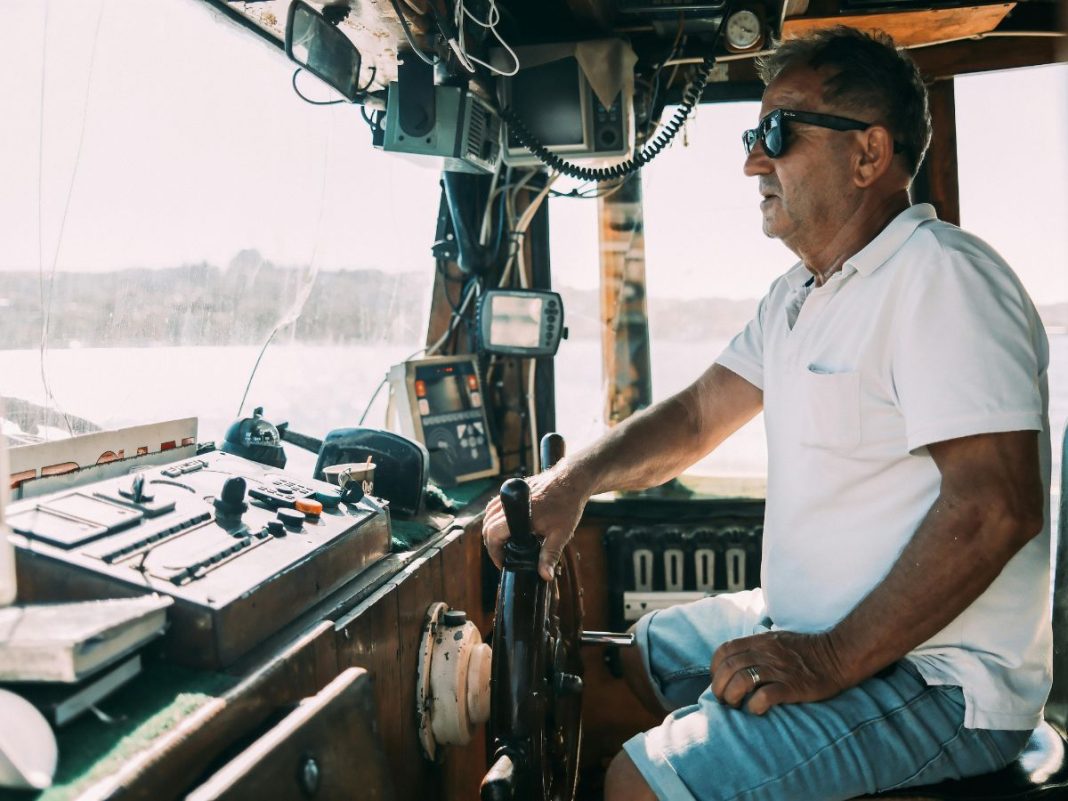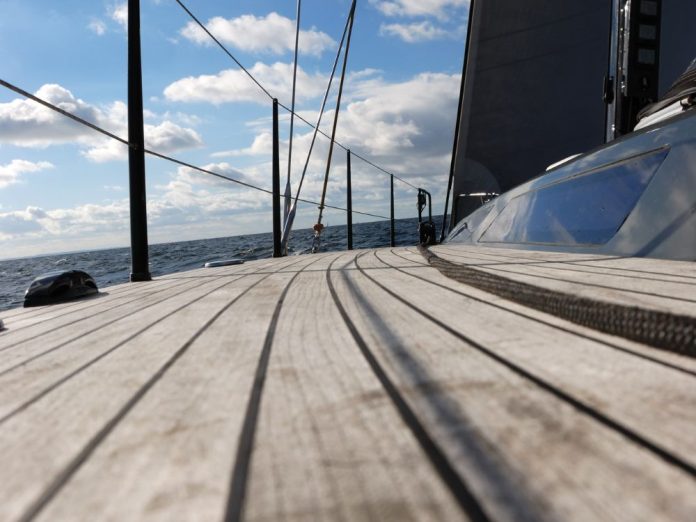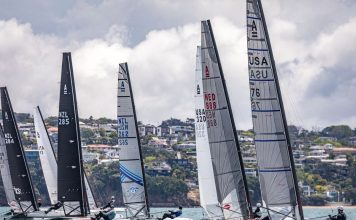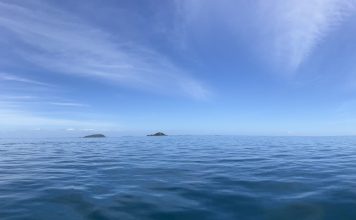Powering freedom at sea
There was a time when staying at anchor for a week meant running the engine each morning to top up the batteries. Today, that hum of a diesel alternator is slowly giving way to the quiet buzz of solar energy. The dream of energy independence afloat; no fumes, no noise, just steady sunlight has become both practical and affordable.
Solar power has matured faster than many realise. From rigid, glass-fronted panels bolted onto hardtops to ultra-thin carbon-fibre sheets designed for racing yachts, marine solar panel technology has evolved into something that fits every vessel, budget, and ambition.
From silicon wafers to carbon fibre sheets
At the core of almost every solar setup lie two familiar technologies: monocrystalline and polycrystalline panels. Monocrystalline panels; dark, sleek, and efficient produce the most power for their size. Polycrystalline panels, with their distinctive blue hue, are a little less efficient but often more affordable.
Both types have proven durable in marine conditions, especially when properly framed or laminated. Yet sailors keep pushing further. Lightweight thin-film panels and flexible laminates now appear on biminis, coachroofs, and even sail covers. These designs trade a little efficiency for versatility and low weight.
More recently, engineers have explored carbon-fibre and perovskite composites; the kind used by Italian company Levante. Their CarbonCore panels are ultralight, semi-rigid, and built from recycled carbon-fibre reinforced polymer. This new breed of panel is strong enough to walk on, light enough for a spinnaker boom, and efficient enough to power a modern cruising yacht.
When the perfect system doesn’t exist, build it
For many boat owners, solar power is about finding the right balance between ambition and practicality. Few have explored that tension more thoroughly than Dan Deckert and Kika Mevs, better known as Sailing Uma.
The couple began converting their 1972 Pearson 36 to electric power long before the technology was mainstream. Over the years they’ve installed multiple electric motors, rewired battery systems, and tested countless charging options; all while documenting every success and setback for hundreds of thousands of YouTube followers.
In 2025 they partnered with Levante to design a custom carbon-fibre solar array for their boat; a solution built from the ground up. For them, the project is about refining what the marine industry still struggles to perfect: lightweight, efficient, ocean-proof solar that can handle months of off-grid living.
Their experience reminds us that even with passion and skill, building a perfect system can take years of trial and error. For most Kiwi boaties, the smarter move is to choose a system that’s already been proven.
Plug-and-play power for real boats
That’s where brands like Victron Energy and retailers like Burnsco have stepped in. Their off-grid solar kits combine panels, MPPT charge controllers, cabling, fuses, and monitoring gear; everything sized to work together straight out of the box.
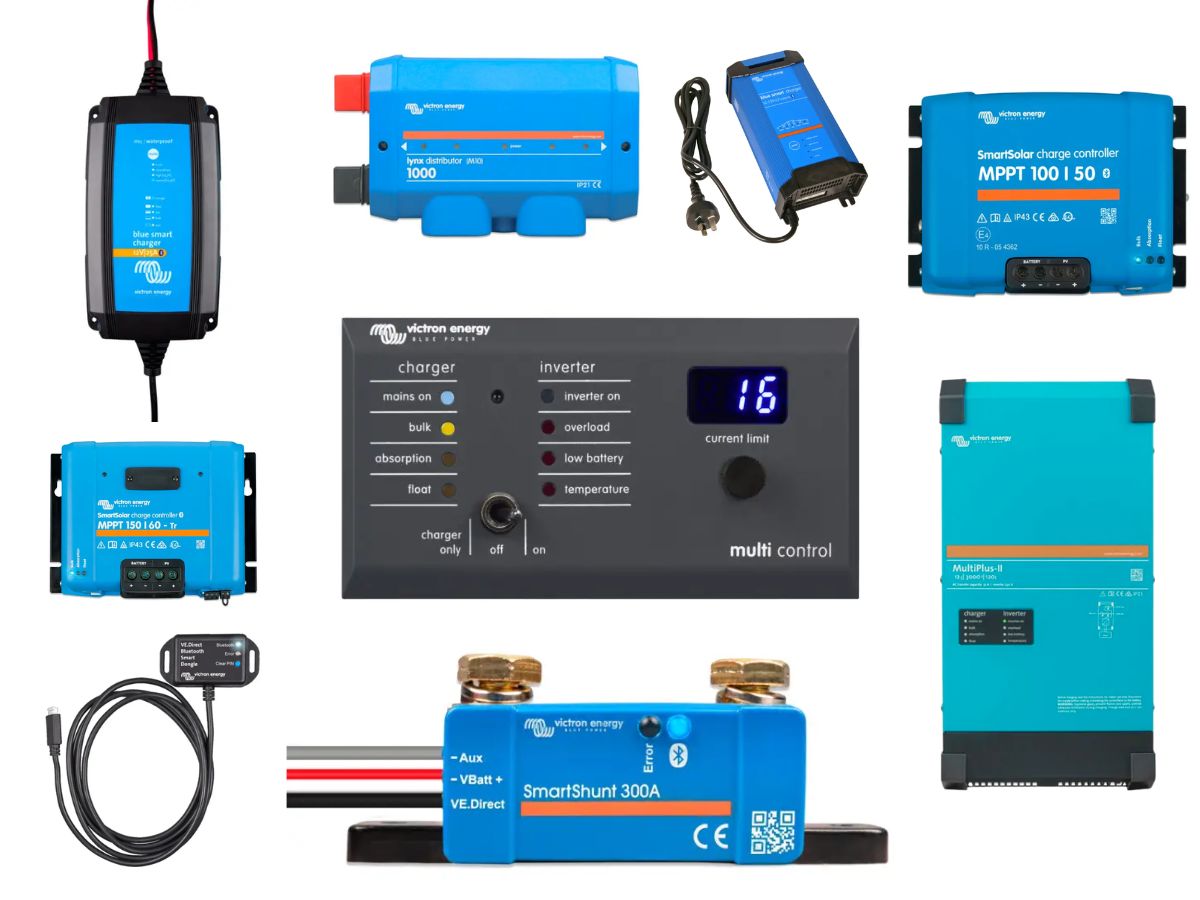
Whether you’re topping up house batteries on a launch or keeping a fridge and lights running on a cruising yacht, these kits make solar simple. With Bluetooth monitoring, integrated smart controllers, and marine-grade fittings, the reliability gap between DIY and plug-and-play has all but disappeared.
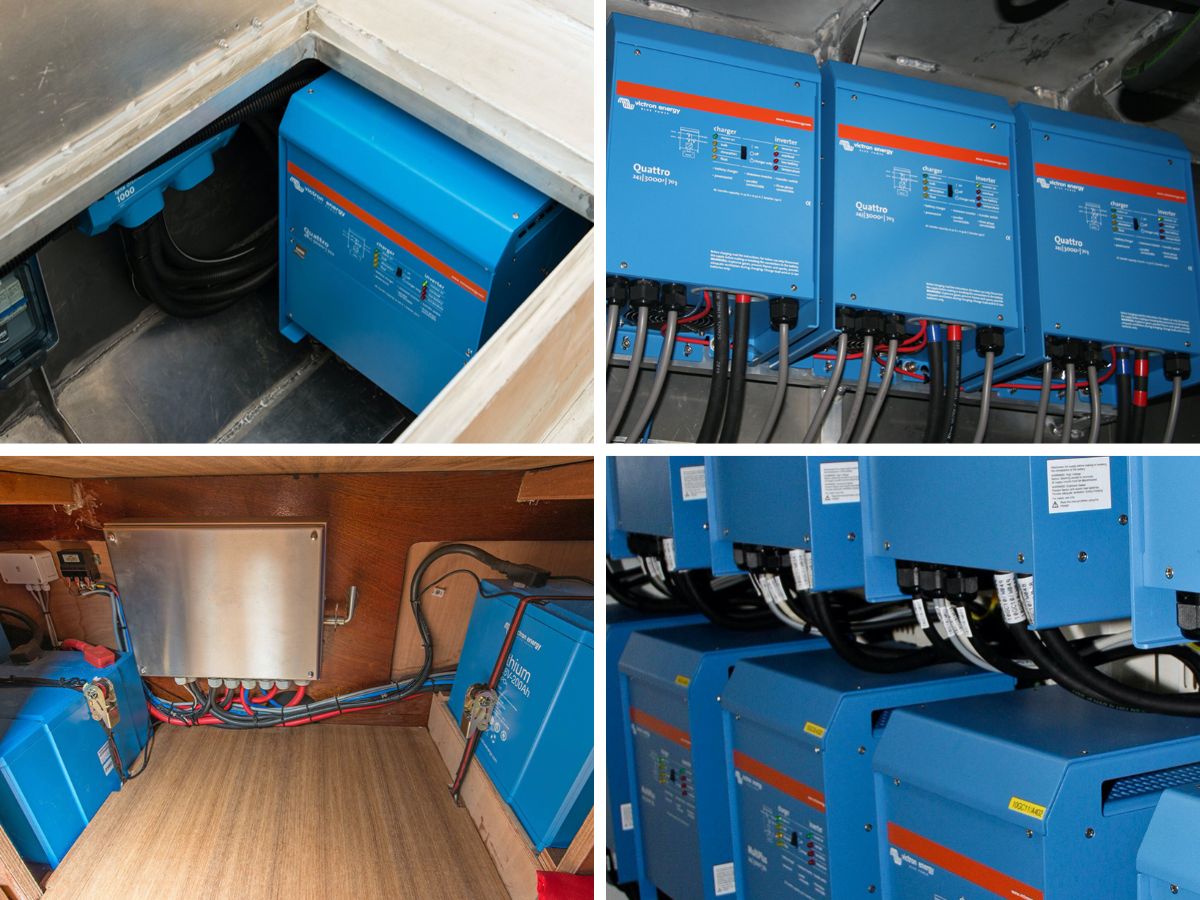
And if you need reassurance, there’s something comforting about buying a system from a local store that understands boating in New Zealand’s salt-laden conditions, and can help when you need advice or spare parts.
The future is bright
From rigid framed panels to semi-flexible laminates and carbon-fibre composites, marine solar panel technology continues to evolve. Early adopters like Sailing Uma have shown what’s possible with experimentation and persistence. But for most boat owners, the path to energy independence no longer requires a workshop full of tools or years of trial.
Today, you can walk into a Burnsco store, pick up a Victron solar kit, and harness the same sunlight that powers the most advanced boats on the planet. Quietly. Efficiently. Reliably.
Because when it comes to life on the water, the best kind of power is the one you hardly notice at all.
My personal experience
I’ve been running monocrystalline panels on my own boat for several seasons now, and they’ve never let me down. Because space is tight up on deck, the high efficiency of mono cells made real sense. Paired with my choice of a Victron SmartSolar MPPT 100/30 controller every morning I can open up the VictronConnect app on my phone and see exactly what my solar is generating, how it’s charging the battery bank, how much is left in absorption or float stage, and even when I should expect to need shore power next.
Victron’s built-in Bluetooth and smartphone interface make the system transparent; I know what’s happening without having to crawl into the battery locker or guess from ammeter readings.
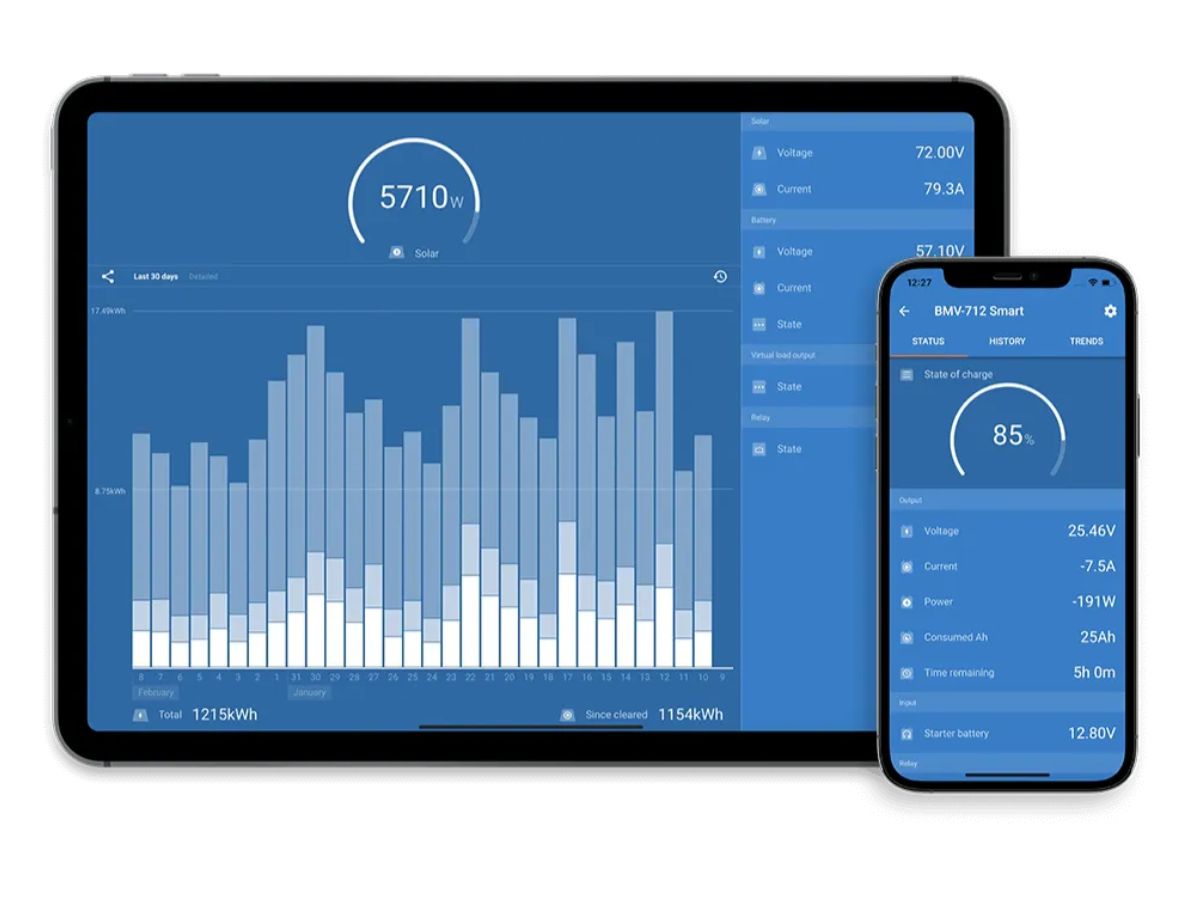
That said, I’m well aware that other controller brands do an excellent job too; and local retailer Burnsco carries a range of good controller brands for smaller installations or tighter budgets.
Yes, the Victron kit carries a bit of a premium, and if your system is simple then you might find a less expensive model perfectly sufficient. But in my view it’s the gold standard for marine solar applications; the reliability, control and local stock / support make it worth the extra investment.









